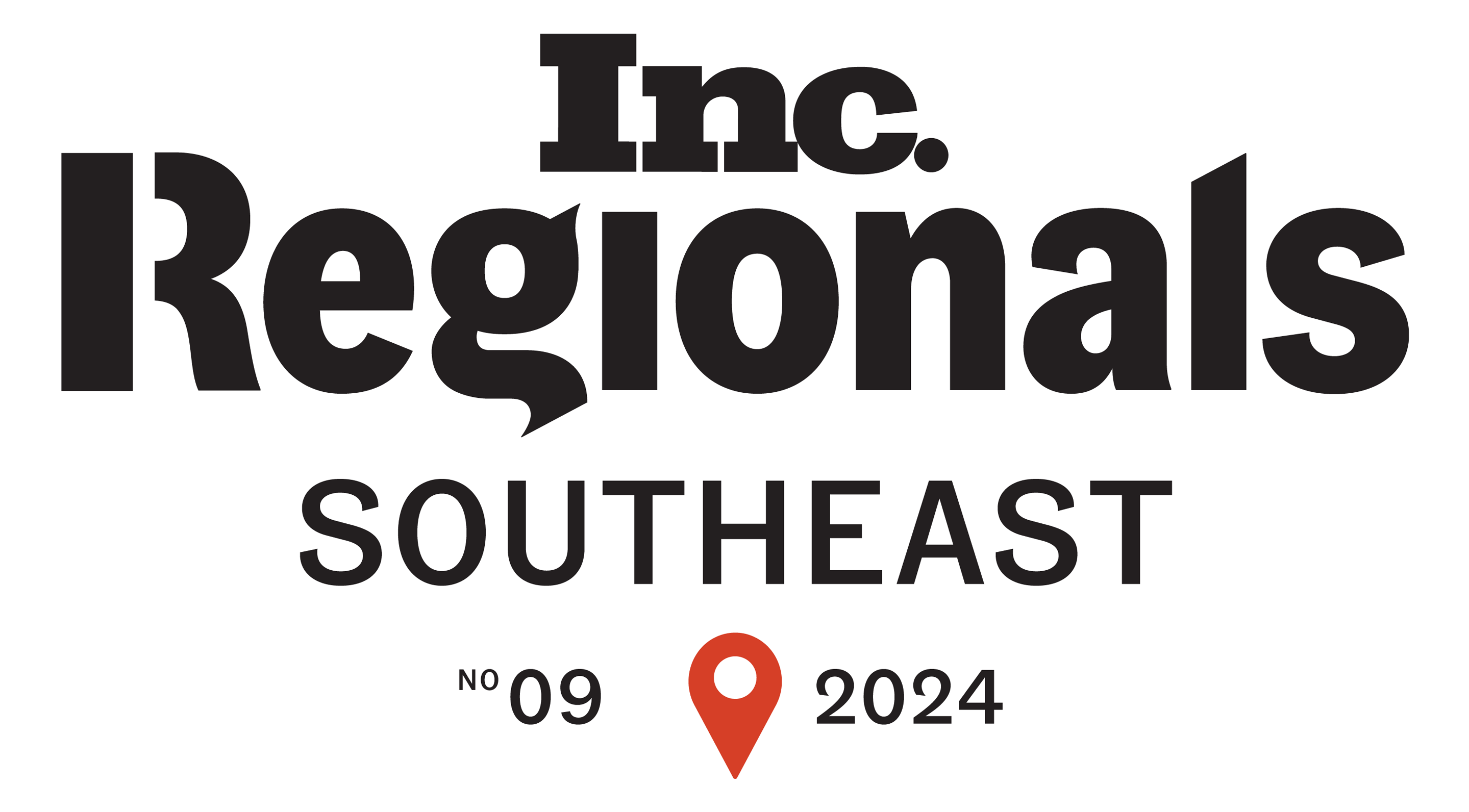Managing warranties is no easy task for manufacturers and original equipment manufacturers (OEMs). With countless claims to track, terms to comply with, and product defects to address, it can quickly become overwhelming. But what if cutting-edge technology could simplify the entire process? Streamlining warranty management doesn't have to be a pipe dream anymore. The right systems and tools can transform this crucial aspect of your business, leading to cost savings, enhanced customer satisfaction, and a competitive edge.
Imagine having insights into potential product issues before your customers even notice them. Or envision automated systems handling claims with remarkable efficiency, leaving little room for errors. This isn't just a fantasy – it's the reality that modern warranty management solutions can provide. So, grab a cup of coffee, and let's explore how advanced technology can revolutionize the world of warranties for manufacturers and OEMs.
The Game-Changing Benefits of Warranty Management Systems
Implementing a robust warranty management system can bring about a wealth of advantages for your business. From tangible cost savings to improved customer loyalty, the benefits are hard to ignore.
Unlocking Significant Cost Savings
When you streamline warranty processes, you naturally reduce the risk of manual errors, which can lead to substantial administrative cost savings. With automated systems, it becomes easier to identify recurring issues and address them promptly, minimizing the expenses associated with fixing repetitive problems.
Additionally, effective warranty management helps track and prevent warranty fraud. Automated tools can flag suspicious claims, ensuring that every dollar spent is legitimate. You'll also save on storage costs by efficiently managing return and repair logistics.
Enhancing Customer Satisfaction and Loyalty
Smooth warranty processes directly contribute to improved customer satisfaction. Customers appreciate rapid claims processing and clear communication, both of which are achievable with high-performing warranty management systems. When customers see that you prioritize their post-purchase experience, they're more likely to remain loyal to your brand.
And loyalty is a game-changer. Happy customers aren't just repeat buyers; they become advocates for your brand, spreading positive word-of-mouth recommendations. With a seamless warranty experience, you're likely to gain more loyal customers who keep coming back.
Proactive Identification and Addressing of Product Defects
One of the standout features of advanced warranty management systems is their ability to spot product defects early on. By analyzing claims data, manufacturers can identify patterns and take corrective actions promptly. This proactive approach leads to better product quality, reducing the frequency of defects and further improving customer satisfaction.
Leveraging the Power of Data Analytics
Data analytics play a pivotal role in modern warranty management. By leveraging this technology, manufacturers can gain valuable insights into warranty claim patterns. This aids in predicting potential issues, enhancing product design, and refining manufacturing processes.
Real-time analytics can also help keep a close eye on claim statuses, ensuring that none fall through the cracks. With a wealth of data at your fingertips, decision-making becomes more informed and strategic.
Streamlining Supplier Recovery and Reducing Financial Losses
Suppliers are a crucial part of the warranty ecosystem. When defects can be traced back to supplied components, a robust warranty management system makes it easy to recover costs from suppliers. This means a lower financial burden on manufacturers and a more organized approach to managing supplier relationships.
Minimizing Manual Errors and Streamlining Claims Resolution
Few things are more frustrating than errors in warranty claims – they slow down the process and lead to unhappy customers. Automated systems reduce these errors by ensuring that all steps are followed correctly.
By streamlining the entire workflow from claim submission to resolution, warranty management systems make it easier to handle each claim efficiently. This leaves less room for mistakes, ensuring a smoother experience for both the business and the customer.

Enhancing Efficiency with Cutting-Edge Technology
Implementing the right technology is key to streamlining warranty tracking and management. Here are some critical features to look for in a top-notch warranty management solution.
Essential Features for Streamlining Processes
When choosing warranty management software, prioritize features that will truly make a difference:
- Automated claim submission: Streamline the way claims are received and processed, minimizing manual intervention.
- Real-time status tracking: Keep everyone in the loop with timely updates on claim statuses.
- Detailed reporting and analytics: Gain insights into claim trends and root causes of failures, enabling data-driven decision-making.
- Supplier management: Easily track and manage supplier components and warranty reimbursements, simplifying the recovery process.
The Power of Automation
Automation is a game-changer in warranty management. By leveraging automated tools, you can significantly reduce the manual errors that are all too common in traditional processes. This not only speeds up claim processing but also ensures higher accuracy, which is crucial for customer satisfaction and operational efficiency.
Seamless Integration with Other Business Systems
Integrating your warranty management system with other business tools like Enterprise Resource Planning (ERP) or Customer Relationship Management (CRM) systems can make a world of difference. Having a single source of truth for all your data helps maintain consistency and accuracy across different departments.
For example, OnPoint Warranty's solutions seamlessly integrate with existing procurement and asset management systems, ensuring smooth data flow and enhancing overall efficiency and decision-making.
Real-Time Analytics for Efficient Tracking
Real-time analytics can provide up-to-the-minute insights into the status of warranty claims. This is invaluable for both customer service teams and upper management, as it ensures that everyone is on the same page. With real-time data at your fingertips, you can quickly adapt and make data-driven decisions.
Standardizing Workflows and Leveraging Bar-Coding
To further streamline operations, it's crucial to standardize your warranty tracking workflows across product manufacturing. This can include implementing bar-coding technologies that facilitate the tracking of each product throughout its lifecycle. Standardization reduces variability and ensures that everyone follows the same procedures, making the entire process more efficient.
Ensuring Compliance with Contractual Obligations
A robust warranty management system ensures that all contractual terms and obligations are met. This reduces the risk of legal issues and improves relationships with both customers and suppliers. Ensuring compliance is not just about avoiding penalties; it's about building trust and reliability in your brand.

Essential Components of a Comprehensive Solution
A truly comprehensive warranty management system should be versatile enough to handle various types of warranties and claims processes, while also providing robust reporting and analytics capabilities.
Warranty Types Covered
A comprehensive solution should be able to track and manage:
- Product warranties: Covering defects in the actual product.
- Service warranties: Covering any post-sale services like repairs.
- Extended warranties: Providing coverage beyond the standard period.
Streamlined Claims Processing and Supplier Recovery
Effective claims processing starts with a streamlined system that includes automated claim submission, verification, and approval processes. For supplier recovery, the system should be capable of identifying defective components and tracking them back to their suppliers, thus simplifying the cost recovery process.
Robust Reporting and Analytics Capabilities
Reporting and analytics tools are essential components of any advanced warranty management system. These tools should allow for:
- Customizable reports: Tailored to meet your specific business needs.
- Dashboard views: Providing an at-a-glance summary of key metrics.
- Trend analysis: Identifying recurring issues and enabling data-driven decisions.
Seamless Integration and Compliance
For seamless operations, your warranty management system should integrate well with other critical business tools like procurement and asset management systems. This ensures smooth data flow between different departments, enhancing overall efficiency and decision-making.
Regulatory compliance is also crucial. A proficient warranty management system should help ensure that all activities comply with relevant regulations, including data security, privacy laws, and industry-specific guidelines. Non-compliance can result in hefty fines and damage to your brand reputation.
Transparency and Visibility
Transparency is key in warranty management. Your system should offer real-time visibility into all claims and credits, allowing for easy monitoring and faster resolution. This not only improves internal processes but also builds a trustworthy relationship with customers.
Warranty Contract Management: A Vital Component
Effective warranty management goes hand-in-hand with robust contract management. A top-notch contract management tool should include features like:
- Automated contract creation: Simplify the process with pre-set templates.
- Contract tracking: Monitor the status and obligations of each contract.
- Compliance management: Ensure all contractual terms are met.
Good contract management software ensures that you are always in compliance with the terms set out in your warranty agreements. This includes alerting you to upcoming deadlines and actions required, helping you avoid potential penalties or breaches.
Just like your warranty management system, your contract management software should integrate seamlessly with other business tools. This connectivity ensures that there are no data silos and that information flows freely across the organization.
Real-time visibility into warranty claims and credits is invaluable. By having this information readily available, you can make timely and informed decisions.
Automation features in contract management software can greatly speed up the processing of warranty claims, including automated claim submission, tracking, and resolution. These tools can also help in managing supplier recovery claims, ensuring that all costs are accounted for and recovered appropriately.
Advanced analytics capabilities in contract management software can provide deep insights into your warranty performance. From identifying high-risk products to understanding customer behavior, these insights are crucial for making data-backed business decisions.
Overcoming Common Pain Points with Technology
Manual processes and data silos are among the most significant pain points in traditional warranty management. By embracing technology, you can overcome these challenges and unlock new levels of efficiency.
Eliminating Manual Processes and Errors
One of the most significant pain points in warranty management is the reliance on manual processes. These can be time-consuming and prone to errors. Technology can automate many of these tasks, significantly improving efficiency and accuracy.
Breaking Down Data Silos
Data silos are another common issue. When information is scattered across different systems, it's difficult to get a clear picture of what's happening. Integrated systems that centralize data make it easier to manage and analyze warranty claims, providing a holistic view of your operations.
Streamlining Supplier Recovery and Reducing Losses
With automated tools, identifying faulty components and tracking them back to suppliers becomes a breeze. This ensures that you can recover costs associated with defective products, thus reducing financial losses significantly.
Enhancing Data Accuracy
By automating the entry and processing of claims, technology reduces the likelihood of manual errors. This improves the accuracy of your data, making it easier to analyze and draw meaningful insights from it.
Accelerating Claims Resolution
Automated systems can process claims faster than any human can. This reduces the turnaround time for resolving warranty issues, leading to happier customers and more efficient operations.
Ensuring Regulatory Compliance
- Technology plays a crucial role in ensuring compliance with regulatory standards. Automated systems can track and flag compliance issues in real-time, ensuring that you stay on the right side of the law. This not only avoids legal trouble but also builds trust with your customers.
Seamless Integration for a Unified Ecosystem
Integrating your warranty management system with other existing systems is essential for a seamless and efficient workflow. Here are some key considerations:
Integrating with ERP Systems
Integrating your warranty management system with ERP systems can streamline your overall operations. Key considerations include:
- Data consistency: Ensure that data flows smoothly between systems.
- User-friendly interfaces: Make sure the systems are easy to navigate and use.
- Scalability: Ensure that the integrated system can grow with your business.
Connecting with Field Service and CRM Systems
For a holistic approach, integrating your warranty system with field service management and CRM systems is crucial. This ensures that all customer interactions and field services are tracked and managed effectively, leading to better customer experiences.
Leveraging APIs and Data Exchange Protocols
APIs (Application Programming Interfaces) and data exchange protocols facilitate the smooth transfer of data between different systems. This is key for ensuring that your warranty management system works well with other software tools you have in place.
Ensuring Data Consistency and Accuracy
Inconsistent data can lead to a host of problems, including incorrect claim processing and poor decision-making. Ensuring data consistency and accuracy across all integrated systems is therefore essential.
Real-Time Visibility and Informed Decision-Making
An integrated system should provide real-time visibility into all warranty claims and credits. This transparency helps in tracking performance and making informed decisions quickly.
With all your data centralized and integrated, you can leverage advanced analytics to gain insights into your warranty claims. This helps in making informed business decisions, improving product quality, and enhancing customer satisfaction.
Best Practices for Implementation and Maintenance
Implementing a new warranty management system is a significant undertaking, but following best practices can ensure a smooth transition and long-term success.
Key Steps for First-Time Implementation
Implementing a new system can be daunting, but following these steps can make it easier:
- Needs Assessment: Identify what your business needs from the system.
- Vendor Selection: Choose a vendor that meets your requirements and budget.
- System Customization: Tailor the system to fit your workflows and processes.
- Data Migration: Transfer existing data into the new system accurately.
- Integration: Ensure the new system integrates seamlessly with other business tools.
- Testing: Perform thorough testing to catch any issues before going live.
- Training: Train your staff on how to use the new system effectively.
Regular Reviews and Updates
Implementing a system is just the beginning. Regular reviews and updates are crucial to ensure that the system continues to meet your business needs. This includes updating software, refining workflows, and making adjustments based on feedback.
Comprehensive Training and Support
A new system is only as good as the people using it. Providing comprehensive training and ongoing support ensures that your staff can use the system effectively. This helps in maximizing the benefits of your investment.
Ensuring Regulatory Compliance
Staying compliant with regulatory standards is crucial for any business. Ensure that your warranty management system meets all relevant regulations and conduct regular audits to stay up-to-date with any changes.
Continuous Improvement with Data Analytics
Use the data and insights gained from your system to continually improve your processes. This includes identifying trends, spotting areas for improvement, and making data-driven decisions to enhance performance.
Monitoring and Optimization
Continuous monitoring is essential to ensure that your processes are as efficient as they can be. Use metrics and KPIs (Key Performance Indicators) to track performance and make adjustments as needed. This helps in maintaining high standards and achieving optimal results.
Data-Driven Insights for Informed Decision-Making
A robust warranty management system provides a wealth of data and insights that can inform your business decisions and drive continuous improvement.
Key Data and Insights Gained
A good warranty management system provides valuable data and insights, including:
- Claim frequency: How often claims are made and trends over time.
- Product defects: Common issues and their root causes.
- Customer feedback: Insights into customer satisfaction and pain points.
- Financial performance: Costs associated with claims and recoveries.
Improving Product Quality and Reducing Costs
Insights gained from data analytics can help in improving product quality. By identifying common defects, manufacturers can make necessary design changes. This reduces the frequency of claims and lowers warranty costs over time.
Tracking Key Metrics and KPIs
Tracking specific metrics and KPIs is crucial for monitoring the performance of your warranty management processes. Key metrics to track include:
- Claim resolution time: Time taken to resolve a claim.
- Claim approval rate: Percentage of claims approved versus rejected.
- Cost per claim: Average cost incurred per claim.
- Supplier recovery rate: Percentage of costs recovered from suppliers.
Advanced Analytics for Deeper Insights
Advanced analytics provide deeper insights into warranty performance. From predictive analytics to machine learning, these tools help in making more accurate and informed business decisions.
Real-Time Visibility and Agility
Having real-time visibility into claims and credits ensures that you can track performance and make adjustments as needed. This transparency is key for efficient and effective warranty management.
Optimizing Processes with Data Analytics
Data analytics can identify bottlenecks and inefficiencies in your warranty processes. By optimizing these areas, you can streamline operations, reduce costs, and improve customer satisfaction.
Unlocking Potential ROI and Cost Savings
Implementing a comprehensive warranty management system can unlock substantial cost savings and potential return on investment (ROI) for your business.
Reducing Warranty Fraud and Improving Supplier Recovery
One of the significant benefits of implementing a warranty management system is the potential cost savings. By reducing warranty fraud and improving supplier recovery, businesses can save a substantial amount of money annually.
Enhancing Operational Efficiency and Resource Utilization
Automated systems streamline processes, reducing the time and resources required to manage warranties. This leads to improved operational efficiency and better utilization of resources, allowing your team to focus on other critical tasks.
Informed Decision-Making and Customer Satisfaction
Investing in a robust warranty management system pays off in the long run. With the insights gained from data analytics, businesses can make more informed decisions, leading to better product quality and increased customer satisfaction.
Real-Time Visibility and Cost Reduction
Real-time visibility into warranty claims and credits ensures that all claim activities are transparent and manageable. This helps in improving response times, increasing customer satisfaction, and reducing overall costs.
Optimizing Processes for Increased Productivity
Advanced data analytics tools can identify areas for improvement in warranty management processes. By optimizing these processes, businesses can enhance their operational efficiency, reduce costs, and increase overall productivity.
Partnering with OnPoint Warranty for Success
Partnering with OnPoint Warranty offers numerous advantages for businesses looking to enhance their warranty management and customer service processes. OnPoint Warranty provides specialized expertise, advanced technology solutions, and a customer-centric approach that can help businesses streamline their warranty claims, improve customer satisfaction, and reduce operational costs. By leveraging OnPoint Warranty's capabilities, companies can focus more on their core competencies while ensuring that their customers receive reliable and efficient warranty support. This partnership can lead to increased customer loyalty, better resource allocation, and ultimately, greater business success.
Next Steps
Ready to turn your warranties into a customer loyalty goldmine?
Don't let warranty management be an afterthought. Embrace it as a powerful opportunity to build trust, showcase your values, and create customers for life.
And if you want to take your warranty game to the next level, it's time to learn more about OnPoint Warranty.
OnPoint Warranty is your secret weapon for transforming warranties from a necessary evil into a competitive advantage. With their cutting-edge platform and expert support, you can:
- Streamline your claims process for maximum efficiency and customer satisfaction
- Offer extended warranties that delight customers and differentiate your brand
- Leverage warranty data for personalized, proactive customer engagement
- And much more
If you're serious about building customer loyalty that lasts, you can't afford to ignore the power of warranties. And you can't afford to settle for anything less than the best in warranty management.
So what are you waiting for? Give us a shout today and learn how we can help you turn warranties into a customer loyalty goldmine. Your customers (and your bottom line) will thank you.








